Strawberry Art
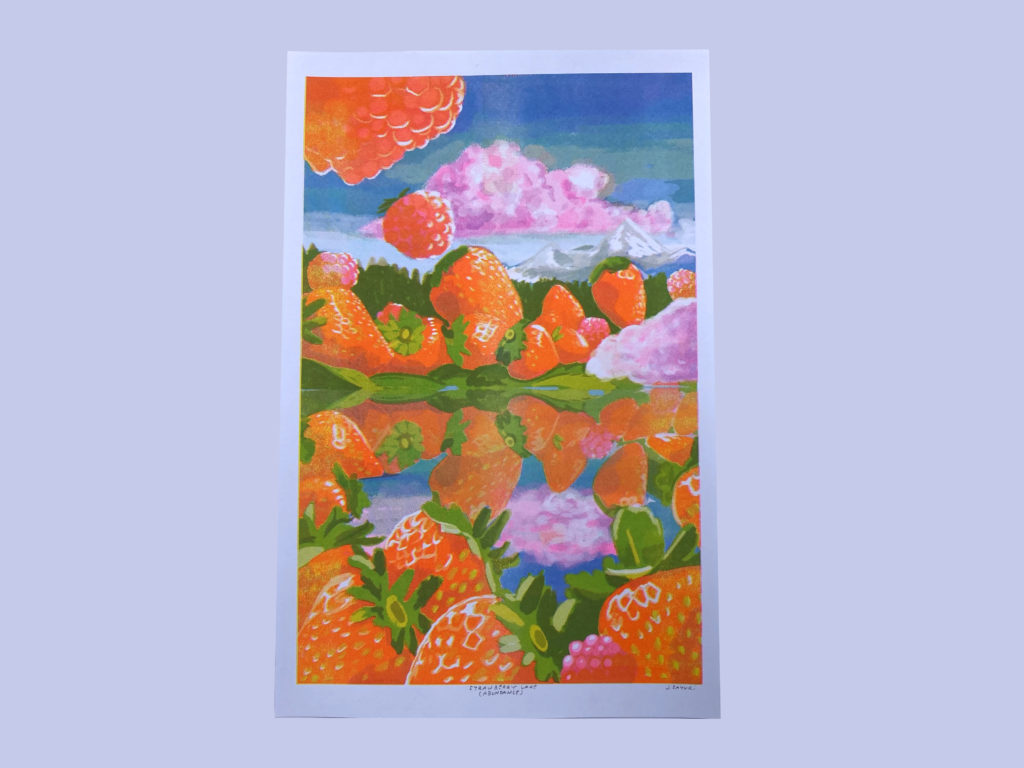
Food, as both a necessity and a cultural symbol, has been a perennial muse for artists throughout history. From the sumptuous still lifes of the Dutch Golden Age to the contemporary works that engage with food as a socio-cultural commentary, the representation of food in fine art mirrors the evolving tastes and values of society. Let’s embark on a delectable journey through the history of food art in celebration of Strawberry Lake, my newest risograph print for sale!
Strawberry Wall Art Art Print Decor
When making this strawberry art, I thought about the symbolism of the strawberry. I also thought about the history of symbolism of the strawberry and how it changed over time and across cultures.
Strawberry Art Symbolism
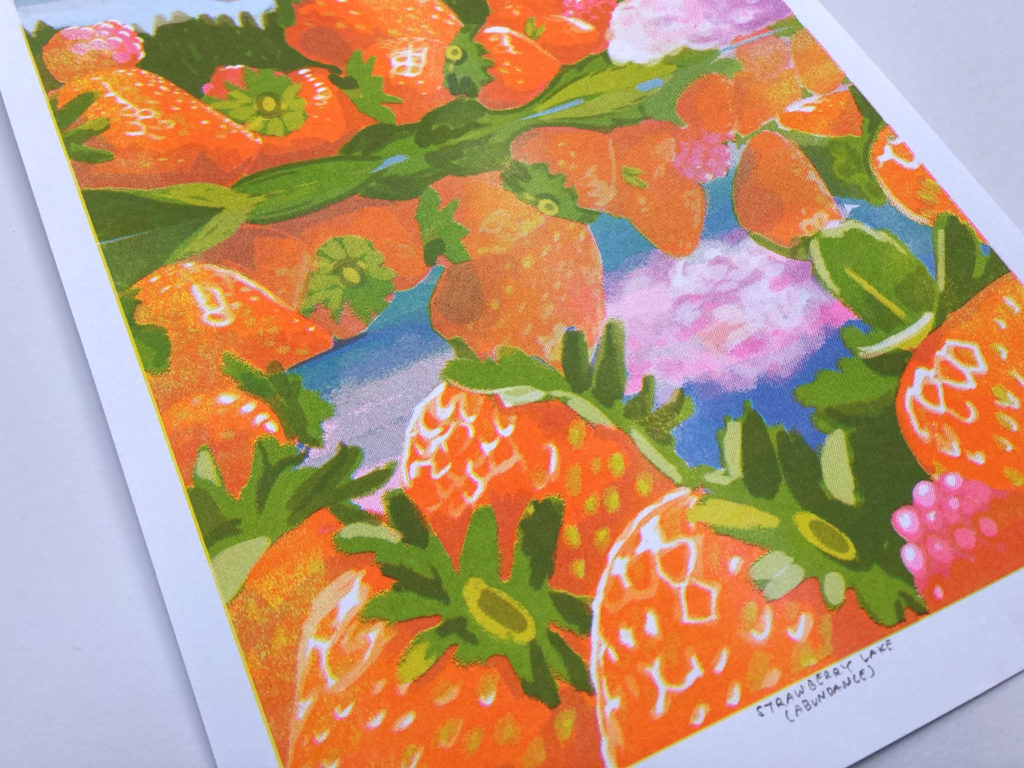
Here are various symbolic meanings of strawberries in fine art:
Strawberries hold various symbolic meanings in fine art, often influenced by cultural, religious, and historical contexts. Here are some interpretations:
- Temptation and Sensuality: In Western art, strawberries are often linked to the Garden of Eden and the seductive allure of forbidden fruits.
- Fertility and Femininity: Strawberries are linked to fertility and femininity because of their red color and small seeds on the surface of their skin.
- Seduction and Eroticism: The vibrant red hue and succulent appearance of strawberries make them symbols of seduction and eroticism in art – appearing in works that explore themes of desire and intimacy.
- Transience and Impermanence: The perishable nature of strawberries has been used in art to symbolize the transience of life and the fleeting nature of pleasure, reminding viewers of the ephemeral quality of earthly delights.
- Abundance and Prosperity: Paintings featuring strawberries may be interpreted as auspicious symbols associated with wealth and plenty.
- Youth and Vitality: The freshness and vibrancy of strawberries symbolizes youth and vitality, often used to evoke feelings of energy, vibrancy and the fullness of life.
- Nostalgia and Innocence: In more nostalgic or innocent portrayals, strawberries can evoke sweetness, simplicity, and the joys of childhood.
What do strawberries make you think about? Do they evoke childhood memories or more intimate moments?
Strawberry Print : My Newest Food Art Creation
Here is my beautiful strawberry art. I made this print through a process called risograph printing. You can learn more about this process and what makes it unique here. This risograph print will be part of a larger series. So stay in touch about this during the coming months. Here is a video of me making my strawberry print:
The History of Food in Fine Art
Let’s get into the history of artist representation of food.
From still life paintings showcasing bountiful feasts to the intricate details of fruit and vegetable depictions, food has captivated artists and viewers alike. In the Renaissance era, food was often depicted in religious paintings as a symbol of abundance and nourishment. As time progressed, artists started using food to comment on social issues, political events, and cultural identities. For instance, the Dutch Golden Age painters during the 19th century often depicted sumptuous still life compositions as a symbol of wealth and prosperity.
7 Best Examples of Food Art
The Garden of Earthly Delights by Hieronymus Bosch

Dutch painter Hieronymus Bosch created this painting between 1490 to 1510. The Garden of Earthly Delights is a triptych that unfolds a surreal and densely detailed narrative across its three panels. The left panel portrays the biblical creation of Adam and Eve, the central panel features a surreal, lush landscape teeming with bizarre creatures and hedonistic scenes, while the right panel depicts the consequences of human indulgence and sin.
The intricate symbolism in Bosch’s work invites viewers to contemplate the allegorical meanings behind the fantastical imagery. The painting’s title, “The Garden of Earthly Delights,” alludes to a complex exploration of human desires, morality, and the consequences of indulgence. Bosch’s ability to weave a rich tapestry of symbolism within the fantastical elements of the painting showcases his unique approach to Northern Renaissance art. The triptych remains a captivating and enigmatic work that continues to inspire contemplation and scholarly inquiry into its symbolic depths.
Vertumnus by Giuseppe Arcimboldo

Vertumus by Giuseppe Arcimboldo is a painting from the late Renaissance in 1590. Arcimboldo, an Italian painter known for his imaginative and eccentric works, was particularly renowned for his unique approach to portraiture.
This food art is an allegorical portrait depicting Rudolf II, the Holy Roman Emperor who commissioned this painting. Arcimboldo’s fascination with the natural world is evident in Vertumnus. What makes this artwork extraordinary is Arcimboldo’s ingenious use of fruits, vegetables, flowers, and other natural elements to form a composite portrait of the Emperor. The title, “Vertumnus,” refers to the ancient Roman god of seasons and change.
The painting is a testament to Arcimboldo’s ability to seamlessly blend whimsy with artistic mastery.
Food Art and Dutch Golden Age Paintings
The Dutch Golden Age painters, such as Willem Claeszoon Heda and Jan Davidsz. de Heem, mastered the art of meticulously rendering sumptuous displays of fruits, game, and luxury items. These works, often referred to as vanitas paintings were laden with symbolic meaning. These examples of food art served as an important reminder of life’s transience and the fleeting nature of earthly pleasures.
Still Life with Ham, Lobster, and Fruit by Jan Davidsz. de Heem

Created in the 17th century, De Heem’s Still Life with Ham, Lobster, and Fruit is a stunning example of Dutch Golden Age still life painting. This sumptuous composition portrays an array of delicious foods set against a lavish backdrop. The meticulous attention to detail and the arrangement of objects create a sense of abundance and indulgence. De Heem’s focus on capturing textures, colors, and realistic representations set a precedent for later still life painters and played a role in the development of surrealism by encouraging artists to challenge the boundary between reality and imagination.
Still Life with Cheese by Floris Claesz. van Dijck

Another wonderful example in the history of food art is Floris Claesz van Dijck’s Still Life with Cheese, painted in the early 17th century. Created around 1615, during the Dutch Golden Age, this artwork epitomizes the meticulous attention to detail and symbolic richness characteristic of the genre.
Van Dijck, a prominent still life painter of his time, skillfully captures the textures and lustrous surfaces of various objects in this composition. The painting features an array of delectable items, including a large wheel of cheese, a partially peeled lemon, a knife, and a roemer glass filled with wine.
The objects in Still Life with Cheese hold symbolic meaning. The cheese, a staple in Dutch diets, could symbolize prosperity and abundance. The carefully placed lemon, often associated with cleanliness and freshness, adds a touch of balance to the composition.
Modern Art and Food
As the 20th century unfolded, artists continued to play with the representation of food, reflecting the dynamic shifts in culture and society. The emergence of Pop Art in the 1950s and 1960s brought forth a new wave of artists, including Andy Warhol and Wayne Thiebaud, who transformed the ordinary into the extraordinary.
Campbell’s Soup Cans by Andy Warhol
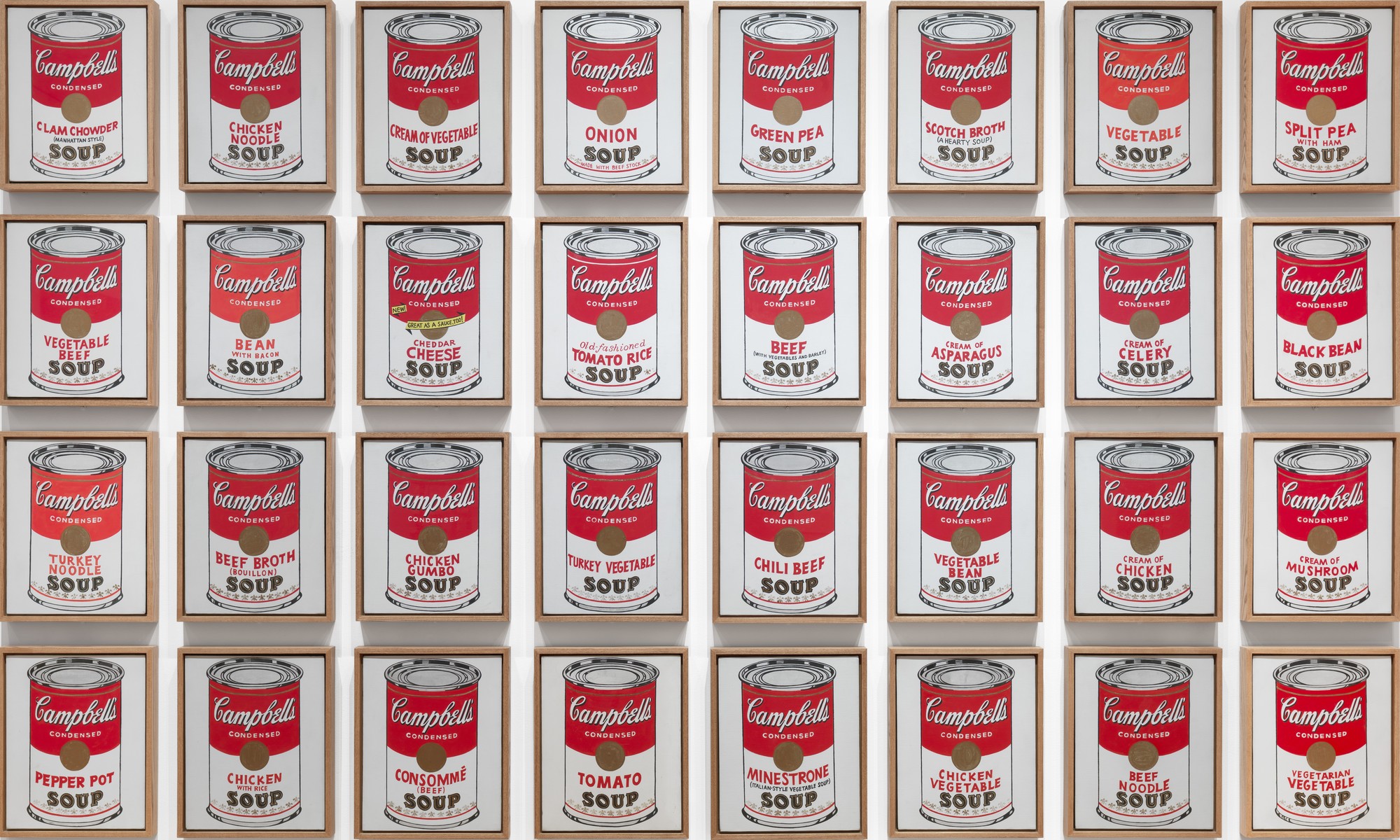
Andy Warhol’s iconic Campbell’s Soup Cans, a series of paintings featuring the ubiquitous soup cans, is a testament to the power of mass production and consumer culture. Warhol elevated the everyday object to the status of high art, challenging traditional notions of artistic subject matter.
Cakes by Wayne Thiebaud
In contrast, Wayne Thiebaud’s works focused on the delectable allure of desserts and pastries. With thickly applied paint and vibrant colors, Thiebaud’s paintings like “Three Machines” and “Cakes” celebrate the sensuality of food, evoking a visceral response from the viewer.

Food has also become a medium for social and political commentary.
The Dinner Party by Judy Chicago
Judy Chicago’s groundbreaking feminist artwork, “The Dinner Party,” features a symbolic feast celebrating historical women’s achievements. Each place setting, adorned with intricate tableware, commemorates a significant female figure, emphasizing the role of women in shaping culture and society
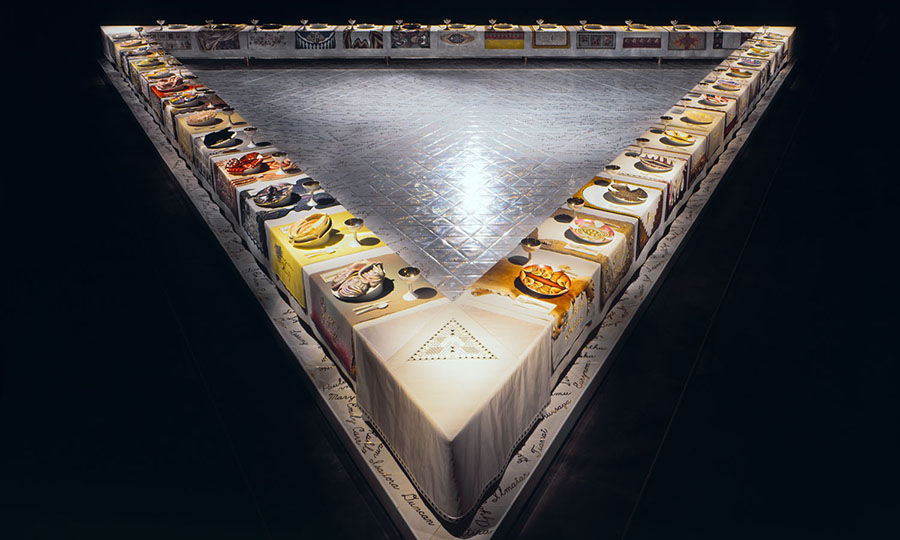
Food Art: Conclusion
From the opulent still lifes of the 1800s to the contemporary explorations of food as a medium for social discourse, the history of food art reveals the relationship between art and society. Food, with its inherent cultural, symbolic, and sensory significance, continues to inspire artists to push the boundaries of creativity.
As we savor the visual feasts left behind by generations of artists, we are reminded that the representation of food in art goes beyond the aesthetic—it is a reflection of our collective human experience, a celebration of life’s richness, and a canvas for the ever-evolving tastes of our cultural palate.
Strawberry Lake – A Tasty Addition to your Art Collection
Consider purchasing this risograph print by artist, J. Sayuri. Details of this print include:
- Measures 11×17 inches
- Printed on card stock
- Printed ecofriendly soy-based inks
- Printed with 3 colors: yellow, fluorescent pink, aqua
- Signed and titled by the artist
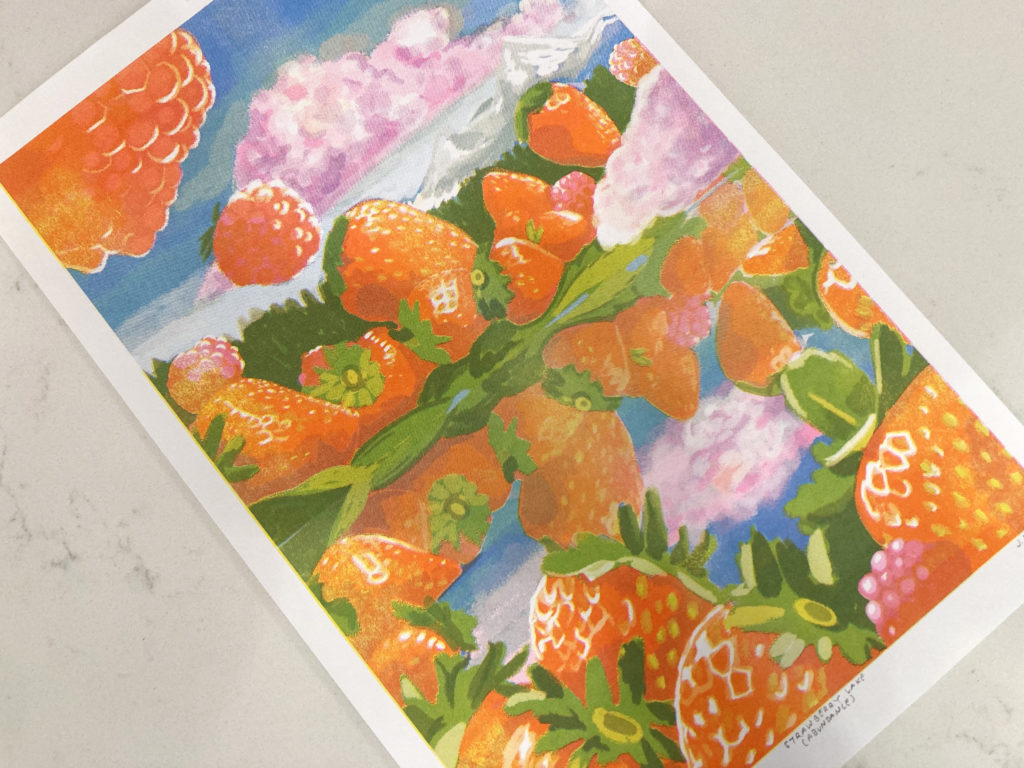
Purchasing this beautiful Strawberry Painting Risograph Print not only brings enchanting art into your life but also supports J. Sayuri, an Asian woman-run shop. By showing your support, you contribute to the growth and recognition of diverse voices in the art community.
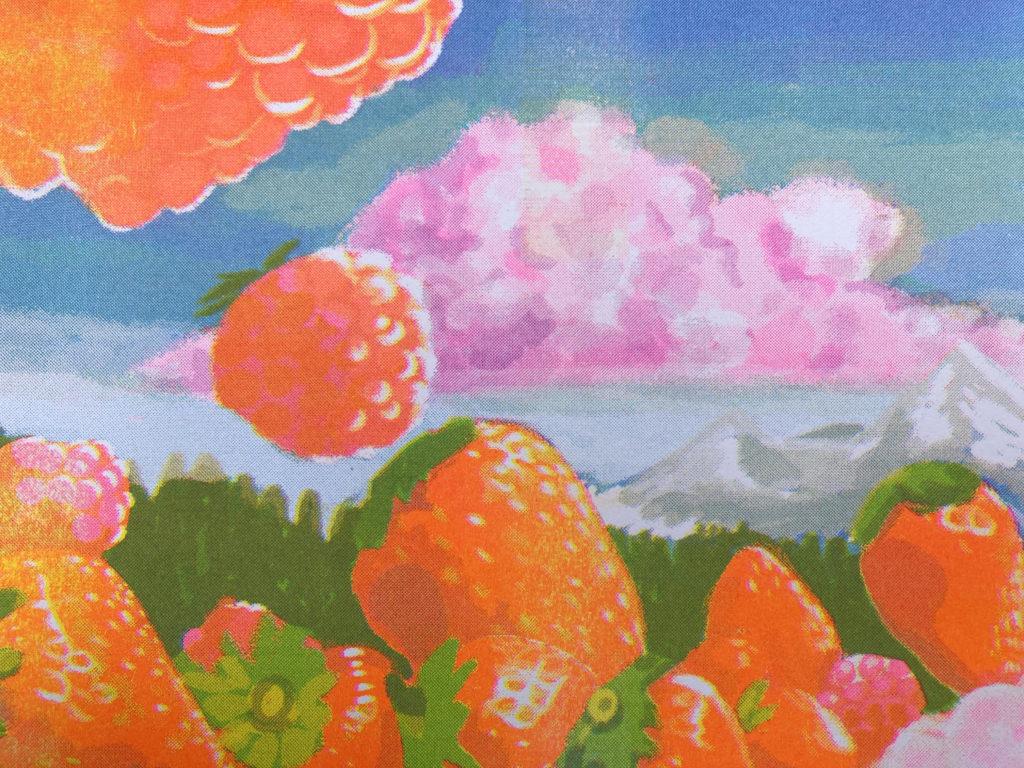
Click here to explore and purchase the Strawberry Painting Risograph Print!
